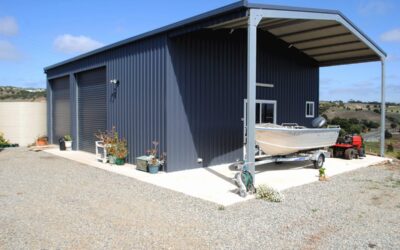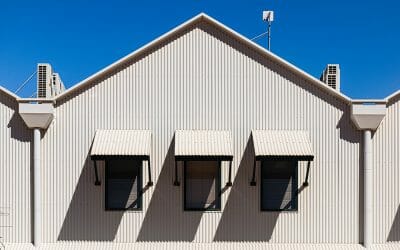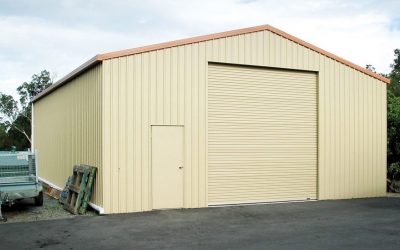How to Build a Farm Shed | Tips from Expert Shed Builders
Farm sheds are essential for many agricultural and rural properties, as they offer storage, workspace, and shelter for farm equipment, animals, and more. However, building a functional and attractive structure is not always an easy task.
Today we’ll walk you through the entire process of building your farm shed, from initial design considerations to selecting the perfect materials and ensuring your structure meets local building codes.
1. Shed design considerations
Before diving into the design details, it is vital to determine the primary function of your farm shed. Will it be used for storage, as a workshop, or to house animals? The purpose of your shed will directly influence its design, size, layout, and required features.
Building for storage
A storage or machinery shed is primarily used for storing tools, equipment, and supplies. Windows are often fewer or smaller, prioritising security and protection from the elements. There is also less emphasis on insulation and ventilation in storage sheds, as there is no human or animal occupation. However, they often feature larger or specialised roller doors for easy access and movement of large farm machinery.
Building for a workshop
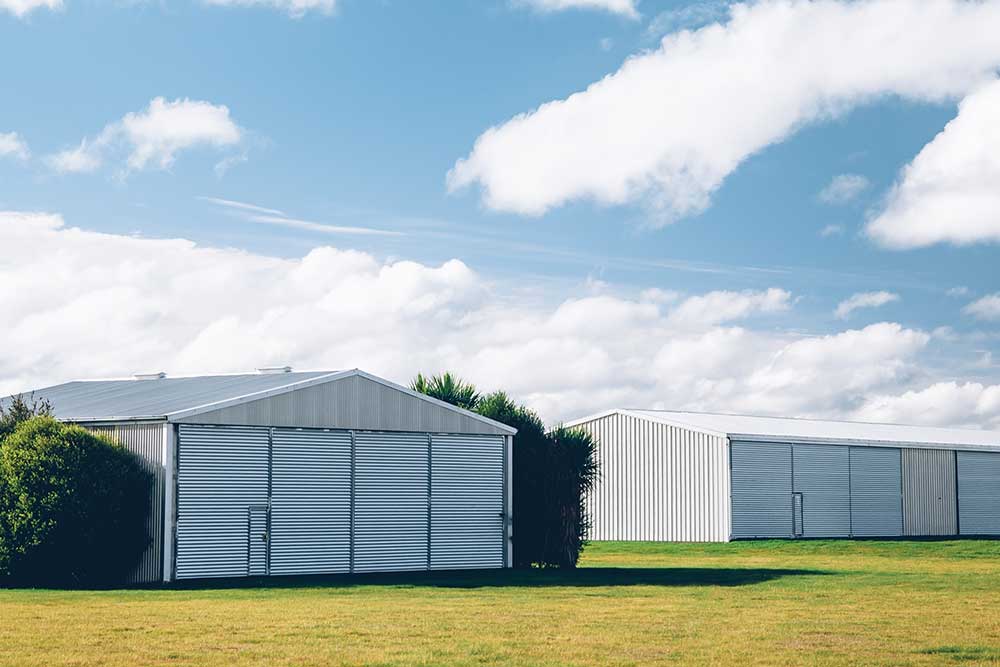
On the other hand, a workshop shed serves as a workspace for various tasks, such as woodworking, metalworking, or repairs. Greater emphasis is placed on natural light and ventilation for a comfortable work environment, which may include larger or additional windows, skylights, and vents. In addition, electrical outlets and lighting are essential to support the use of power tools and equipment. Finally, workshop sheds may also require better insulation and climate control for year-round comfort during work sessions.
Building for animals
An animal shed is designed to house animals such as livestock, horses, or poultry. The size and layout of an animal shed depend on the type and number of animals, as well as their specific needs. Animal sheds feature individual stalls, pens, or open spaces for the animals, with appropriate flooring and bedding materials. Ventilation, cleanliness, and animal comfort are prioritised in these sheds, which may include larger windows, vents, or fans to promote air circulation and prevent moisture buildup. Animal sheds may require specialised doors, gates, or ramps for animal access and safety. Additional features may include feeding and watering systems, tack storage, or milking stations, depending on the animals housed. Finally, proper insulation and temperature control may be crucial for the well-being of the animals.
2. Choosing the right materials
Choosing the ideal building material for your farm shed is a vital decision that impacts its durability, aesthetics, and maintenance requirements. When considering metal sheds, two popular options are Colorbond and Zincalume steel. Both are known for their strength, durability, and low maintenance needs, making them suitable choices for farm sheds.
Colorbond steel offers a wide range of colours and finishes, allowing you to match your shed with the surrounding property or achieve a specific aesthetic. It is coated with a durable paint system, providing additional protection against the elements and enhancing its visual appeal.
On the other hand, Zincalume steel features a zinc and aluminium alloy coating that offers excellent corrosion resistance and a more subtle, metallic finish. While it may not have the colour variety of Colorbond steel, Zincalume is often more budget-friendly.
By carefully weighing the pros and cons of each material, along with factors like local climate conditions, desired appearance, and budget, you can select the best option for your farm shed. For more information on the topic, check out our blog on Colorbond vs Zincalume Steel.
3. Building foundation and framing
Constructing a solid foundation and robust framing for your farm shed is essential to ensure its stability, durability, and long-term performance. A concrete foundation, such as a concrete slab, is an excellent choice for farm sheds as it provides a strong, level, and moisture-resistant base that can support heavy loads and withstand harsh weather conditions.
To build a concrete foundation, you’ll need to prepare the site by excavating and levelling the ground, installing formwork, and laying a layer of compacted gravel or sand for proper drainage. After reinforcing the foundation with steel rebar, you can pour the concrete, ensuring it’s evenly spread and levelled. For more information on the topic, check out our blog on Concrete Slabs.
Once the concrete has cured, you can proceed with the steel framing. Steel framing offers numerous advantages for farm sheds, including strength, durability, and resistance to pests and rot. Steel frames can be pre-engineered or custom-built, with various gauges and profiles available to suit your specific needs. When assembling the steel frame, ensure that all components are accurately measured, cut, and fastened together according to your shed’s design plans.
By investing in a high-quality concrete foundation and steel shed framing, you can create a farm shed that stands the test of time and meets your needs effectively.
4. Installing doors, windows, and roofing
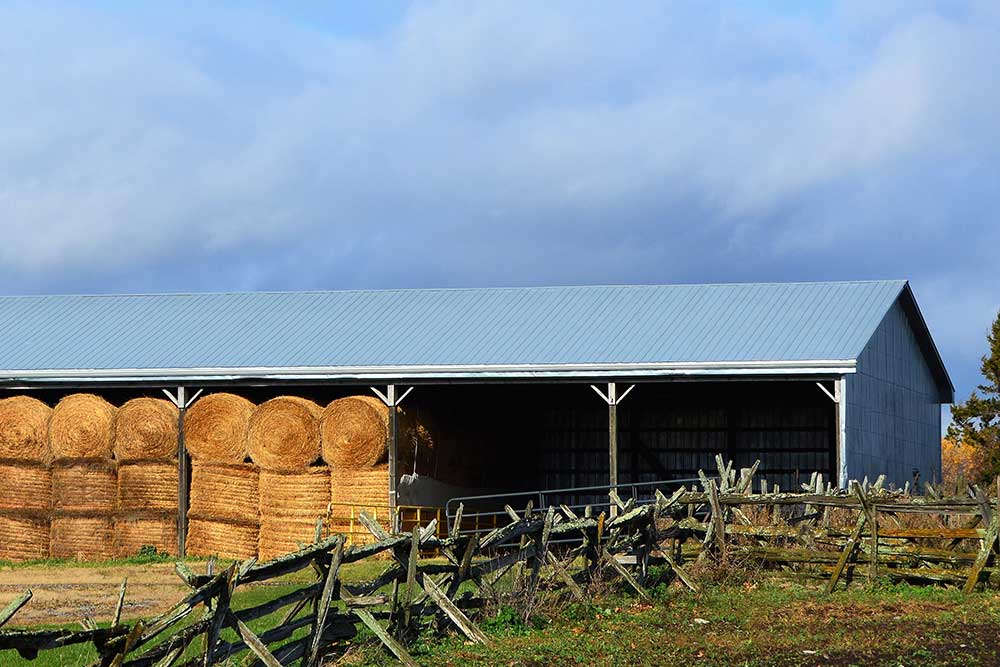
The installation of doors, windows, and roofing on your farm shed is a crucial step in the construction process, as these elements contribute to the shed’s functionality, security, and protection from the elements.
When installing doors, make sure they are of appropriate size and type, allowing for easy access and movement of equipment, vehicles, or livestock. Also, consider factors such as security, insulation, and durability when selecting door materials, and ensure that they are properly fitted and aligned with the shed’s frame.
For windows, focus on their placement to provide optimal natural light and ventilation while maintaining security. Choose window materials that offer a balance of energy efficiency, durability, and ease of maintenance.
When it comes to roofing, selecting the right materials and style is essential for ensuring proper water drainage, insulation, and overall aesthetics. Popular options include metal roofing, such as Colorbond or Zincalume steel. Install the roofing materials making sure that they are securely fastened and sealed to prevent water intrusion and provide lasting protection. Check out our blog on Shed Gutters to decide if your farm shed needs guttering.
5. Shed insulation and ventilation
Incorporating insulation and ventilation into your farm shed is essential for maintaining a comfortable and healthy environment inside, regardless of its intended use.
Proper insulation helps regulate temperature, reduces energy costs, and improves soundproofing, making it especially important for workshop sheds or animal housing. Common insulation materials include fibreglass batts, rigid foam boards, and spray foam, each with distinct advantages and installation methods. To ensure maximum effectiveness, install insulation according to the builder’s recommendations and pay attention to potential gaps, such as around windows and doors. For more tips, check out our blog on How to Insulate Your Shed.
Ventilation, on the other hand, plays a crucial role in preventing moisture buildup, controlling odours, and maintaining good air quality inside the shed. You can achieve proper ventilation by incorporating strategically placed windows, vents, or exhaust fans in the shed’s design, promoting air circulation and preventing stagnation. In animal sheds, ventilation is particularly important for the health and well-being of the livestock. For more tips, check out our blog on Shed Ventilation.
By carefully installing insulation and ventilation systems in your farm shed, you can create a comfortable, energy-efficient, and healthy space that meets your needs and those of your animals.
6. Building codes and regulations
Adhering to local building codes and regulations is an essential aspect of constructing a farm shed, as these guidelines ensure the safety, structural integrity, and compliance of your building.
Building codes and regulations may vary depending on your location, but they generally cover aspects such as zoning, setbacks, maximum height and size, foundation requirements, and materials used.
Before beginning construction, it’s crucial to consult your local planning department or building authority to obtain relevant information and permits, if necessary. You may also be required to submit your shed’s design plans or custom shed plans for approval, so be prepared to provide detailed drawings and specifications.
For more detailed information, check out our blog on Agricultural Shed Planning Permission.
7. Common mistakes to avoid
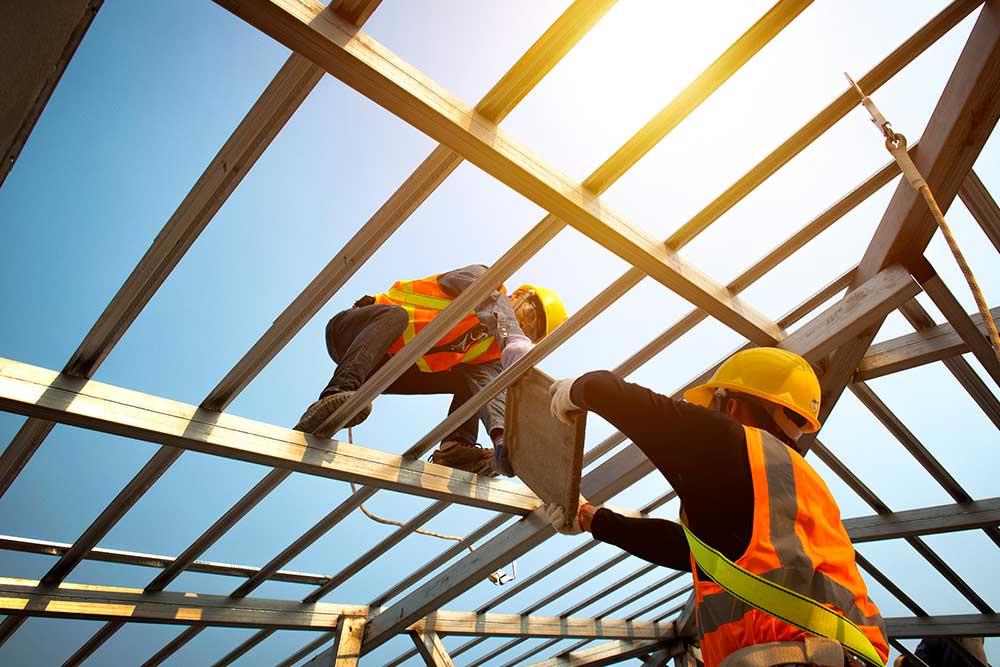
One common mistake is skimping on the foundation, which can lead to structural problems, such as uneven floors or moisture infiltration. Invest in a solid, well-prepared concrete foundation to ensure the stability and longevity of your shed.
Another mistake is choosing the wrong materials, which can result in increased maintenance, decreased durability, or an undesirable appearance. Select materials that suit your needs, local climate, and aesthetic preferences while considering their long-term performance.
Inadequate planning is another common pitfall, leading to issues with layout, functionality, and compliance with building codes. Take the time to thoroughly plan your shed’s design, considering its intended use, location, and any potential future needs. Failing to consider insulation and ventilation can result in an uncomfortable or unhealthy environment inside your shed, so be sure to include these elements in your design.
Lastly, underestimating the complexity of the project can lead to delays, increased costs, or even the need for professional intervention. Assess your skill level and available resources before embarking on the project, and don’t hesitate to consult experts or seek help when needed.
8. Maintenance and upkeep
Proper maintenance and upkeep of your farm shed are essential for preserving its functionality, appearance, and longevity.
- Regular inspections should be conducted to identify any signs of wear, damage, or potential issues. Check for leaks, rust, rot, or pest infestations and address them promptly to prevent further deterioration.
- Keep the shed clean and well-organised, as this not only improves its usability but also allows you to identify problems more easily. Ensure that gutters and drainage systems are clear of debris to prevent water buildup and moisture-related issues.
- Inspect doors and windows regularly, ensuring they are in good working order and well-sealed to prevent drafts, moisture infiltration, or security breaches.
- Maintain the area around your rural shed by keeping vegetation trimmed, removing debris, and ensuring proper grading for water drainage.
By regularly performing maintenance and upkeep tasks, you can extend the life of your farm shed and ensure that it continues to serve its purpose effectively for years to come.
Similar Articles
How to Secure a Shed from Theft
Today, we’ll explore five effective security measures that are essential in protecting your shed against potential intruders. Build a secure shed today!
What Size Shed Do I Need? | 6 Key Factors to Consider
Today, we will explore the 6 questions you have to answer when deciding what size shed to build. These will ensure you make the most out of your space & money.
Sliding Doors vs Roller Doors | Which Type of Shed Door Should You Get?
Today we will compare two popular types of shed doors, sliding doors and roller doors. Discover their advantages and which type best suits your needs.


